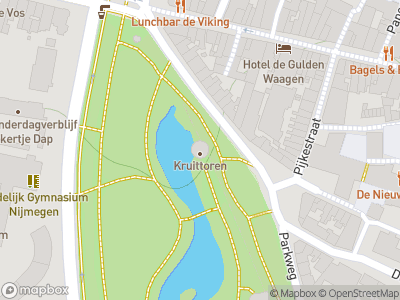Construction of the city walls began in the 13th century. The Kronenburger, or Kruittoren (gunpowder tower), dates from 1425. As the name suggests, gunpowder was stored here. The tower is 30 metres tall and has two patrol paths.
Height
The tower is so high because it formed an important part of the second medieval city wall. This was where the wall took a turn to the east. The Kruittoren was therefore originally a corner tower. Later the city defences were extended towards the south. The wall then took its present course, in the direction of the Roman Foot rondel, located a short distance away.
Imposing wall tower
It is remarkable that the Kruittoren survived the Late Middle Ages. With the introduction of cannon in the 15th century, high wall towers in city walls lost their popularity, simply because they could collapse easily during a bombardment. For that reason, almost all the high wall towers were demolished during that time. Nowadays, the tower is without doubt the most imposing wall tower in the Netherlands.
Fortified city
Nijmegen was a stronghold until well into the 19th century, surrounded by 6 kilometres of city walls and over 25 towers and fortified gates. Within those walls, 25,000 inhabitants were crowded into 2,400 houses. This resulted in very unhygienic conditions. However, the ministry of war would not permit the city to expand outside the city walls, and so the walls were experienced as oppressive.
Country park
In 1874 the new Fortifications Act took effect. At last, the hated city walls could be taken down. Two years later, demolition work started on large parts of the walls, and a plea for the retention of part of the wall around the historic Kruittoren was successful. The city canal was reformed into a prettily winding pond at the foot of the tower, which, together with a piece of the city wall, took on the role of a medieval ‘citadel’ in a romantic country park.










